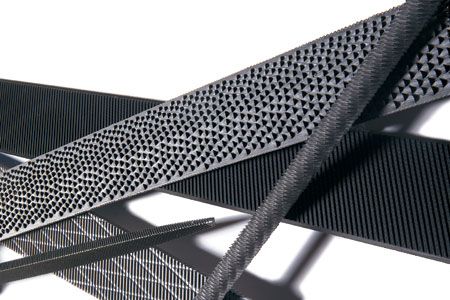In the world of woodworking and metalworking, there are few tools as essential as files and rasps. These tools can shape and smooth many materials, from wood to metal. This guide provides a complete look at files and rasps, explains what they are, how they differ, the types available, and how to use them effectively.
Files vs. Rasps
While similar, there are important differences between a file and a rasp.
What Is a File?
A file is a tool with parallel, sharp edges cut into its surface. Files are commonly used on metals, plastics, and wood and are known for their precision and ability to remove small amounts of material, resulting in a smooth finish. Files come in various shapes and sizes to fit different applications and offer a more refined finish, making them suitable for tasks that require high precision.
What Is a Rasp?
A rasp is primarily used in woodworking. It has individual raised teeth that are typically coarser than those on a file. This makes rasps ideal for quickly removing larger amounts of wood and shaping it efficiently. Rasps provide a rougher finish compared to files, but they’re invaluable for tasks that require significant material removal. This makes them popular among carpenters and sculptors who frequently need to shape large blocks of wood.
Types of Files and Their Uses
Figure out which file type is best for your home improvement project.
Flat Files
Flat files are extremely versatile and great for beginners. They’re rectangular with a flat surface and are used for general-purpose work on both wood and metal. Variations like mill files and hand files fall under this category, each with slightly different tooth patterns and densities. Mill files are often used for finer work, while hand files can handle more robust tasks. Their broad application makes them a staple in many workshops.
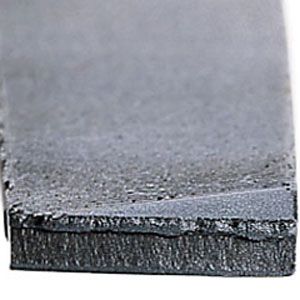
Round Files
Round files, also known as rat-tail files, are cylindrical. They help enlarge holes or create a concave surface. These files are often used for detailed or precision work since their unique shape allows them to reach into small, narrow spaces that flat files cannot, giving flexibility in shaping intricate designs or fittings.
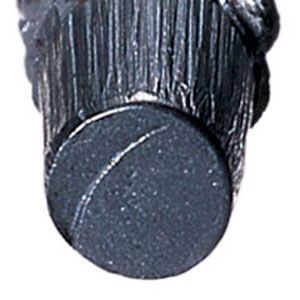
Half-Round Files
As the name suggests, half-round files have one flat side and one rounded side. Their design makes them highly versatile for working on both flat surfaces and curved contours. Half-rounds are frequently used in both woodworking and metalworking. The dual surface allows craftsmen to switch between different tasks without changing tools, making them excellent for complex projects with varied shapes.
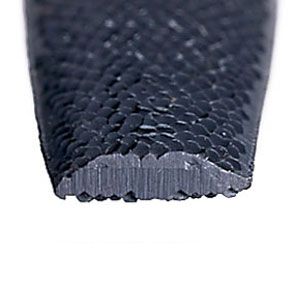
Triangular Files
Triangular files have a tapered cross-section, which allows them to fit into tight spaces and cut at precise angles. They’re great for sharpening cutting tools, primarily saw teeth, ensuring they stay efficient and last a long time.
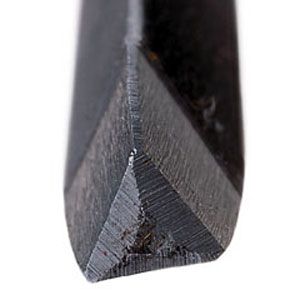
Types of Rasps and Their Applications
Learn about the different types of rasps and what they’re used for.
Cabinet Rasps
Cabinet rasps are known for their fine tooth pattern, making them best for more delicate woodworking tasks. They’re used for shaping and smoothing wood with control and precision, which makes them ideal for cabinet makers and furniture designers who want to add high levels of detail and craftsmanship to their work.
Wood Rasps
Wood rasps are coarser than cabinet rasps and are designed for more aggressive material removal. They’re good for quickly shaping wood and are commonly used in carpentry and sculpting. The coarser teeth allow for rapid removal of rough sections of wood, so you can make faster progress on large projects.
Four-in-Hand Rasps
Four-in-hand rasps are versatile tools that combine different rasp surfaces into one tool. They typically include flat, round, and half-round surfaces, making them useful for various tasks without needing to switch tools.
Choosing the Right Tool
Here are the biggest factors to consider when selecting the right tool for your project.
Material You’re Working With
Files are generally better for metals and plastics, while rasps work best in woodworking. Select a tool suited to the hardness and texture of your material. For instance, a metal file would not be effective on softwood, and a wood rasp would be too coarse for delicate metalwork.
Desired Finish
Finer teeth result in smoother finishes, while coarser teeth remove material quickly but leave a rougher texture. Choose a tool that matches the finish you want. A fine file works for intricate details and polished surfaces, whereas a coarse rasp is better for initial shaping.
Size and Shape of the Workpiece
Larger surfaces may need bigger tools like flat files or wood rasps, while smaller, detailed work may call for round files or cabinet rasps. The tool should comfortably fit the contours and dimensions of the working material for peak efficiency and precision.
Proper Techniques for Using Files and Rasps
Ensure you’re using your file and rasp correctly with these techniques.
How To Hold a File or Rasp
Proper grip and hand placement are key to control and efficiency. Hold the handle with one hand while guiding the tool with the other, creating even pressure, stability, and control. The balance and grip will prevent slipping and ensure precise shaping.
Filing and Rasping Motions
The motion you use will vary depending on the tool and material. For files, use long, even strokes along the material’s surface, maintaining consistent pressure. Rasps often require shorter, more forceful strokes to remove larger amounts of material quickly. Adjust your technique to the job’s specific needs for smooth and effective material removal.
Common Mistakes To Avoid
Avoid common mistakes such as applying uneven pressure, using the wrong tool for the material, or not maintaining the correct angle. These errors can lead to poor results and could even damage your tools. Consistent practice and attention to technique will help you avoid these pitfalls and get better results.
Maintenance and Care of Your Tools
Help your files and rasps last longer with these maintenance tips.
Cleaning Your Files and Rasps
Regular cleaning prevents buildup and prolongues your tool’s effectiveness. Use a wire brush or file card to remove debris from the teeth. Clean your tools after each use to keep them in good condition. This prevents the accumulation of material that can dull the teeth and shorten the tool’s longevity.
Storing Your Tools Properly
The right storage prevents damage and prolongs the life of your tools. Store files and rasps in a dry, clean place, preferably in a tool roll or wrapped in cloth to prevent them from knocking against each other. Organized storage also makes it easier to locate and access your tools when needed.
When To Replace Your Files and Rasps
Recognize the signs of wear, such as rounded teeth or decreased effectiveness. When tools become worn out, replace them to keep your work precise and efficient. Using worn tools can lead to frustration and subpar results, so replace them as soon as you need to.
Safety Precautions When Using Files and Rasps
Safety should be your top priority when using these tools to avoid injury and keep your work flowing smoothly. Always wear protective gear, such as gloves and safety glasses, to protect yourself from flying debris and accidental cuts. Handle tools carefully, and keep them sharp and clean to reduce the risk of accidents. Regular tool inspection and maintenance can prevent unexpected issues during use.
